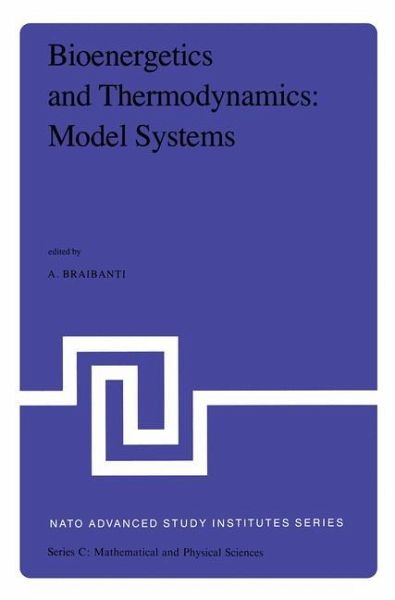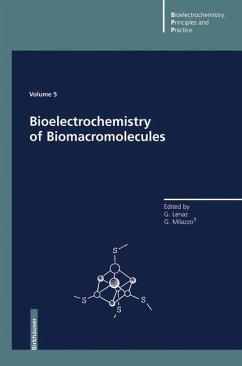
Bioenergetics and Thermodynamics: Model Systems
Synthetic and Natural Chelates and Macrocycles as Models for Biological and Pharmaceutical Studies
Herausgegeben: Braibanti, A.

PAYBACK Punkte
20 °P sammeln!
This book reports the text of the lectures given at Tabiano, Sal so maggiore, Italy, during the Summer School on Bioenergetios and Thermodynamios: ModeZ Systems, in May 1979. The aim of the School has been that of trying to employ the thermodynamic data on synthesised organic compounds with special reference to macrocylic ligands for the interpretation and predic tion of energetic processes involving small and large molecules. A detailed description of the origin, scope and plan of the School can be found in the introductory lecture by A. Braibanti. In appendix to this lecture there are listed...
This book reports the text of the lectures given at Tabiano, Sal so maggiore, Italy, during the Summer School on Bioenergetios and Thermodynamios: ModeZ Systems, in May 1979. The aim of the School has been that of trying to employ the thermodynamic data on synthesised organic compounds with special reference to macrocylic ligands for the interpretation and predic tion of energetic processes involving small and large molecules. A detailed description of the origin, scope and plan of the School can be found in the introductory lecture by A. Braibanti. In appendix to this lecture there are listed some introductory books recommended to achieve a sufficient background in the differ ent scientific fields contributing to the School. The audience consisted of about a hundred scientists belong ing to different fields. Physical, organic, inorganic, pharmaceut ical, analytical and medicinal chemists, biochemists, biophysicists, pharmacologists interested in the problems of calorimetry, poten tiometry, spectroscopy, transport properties of synthetic and natu ral chelates and macromolecules spent two weeks to discuss topics ranging from thermodynamics to electrochemistry, from measurements on pure compounds to determinations on membranes. This picture of the audience is an indication of researchers which can be interested in this book.














